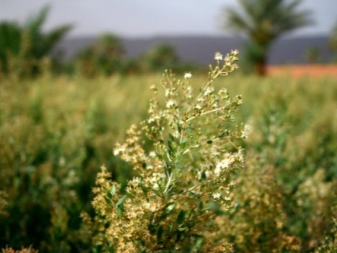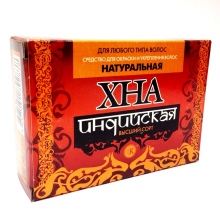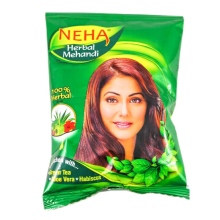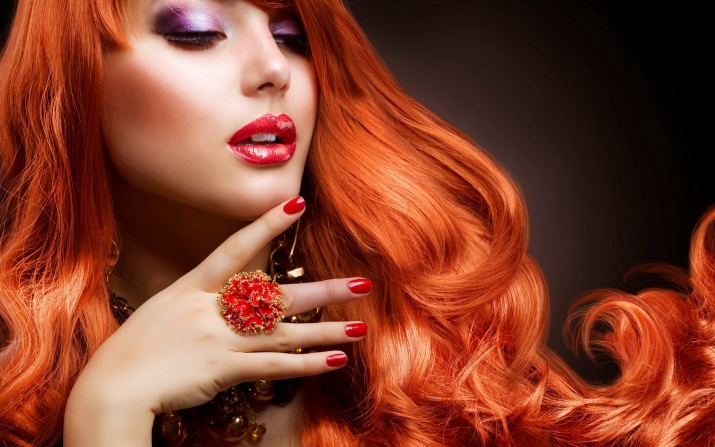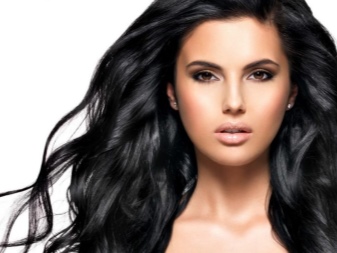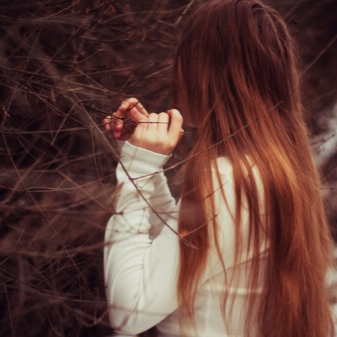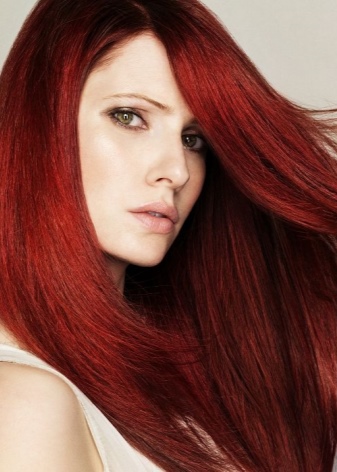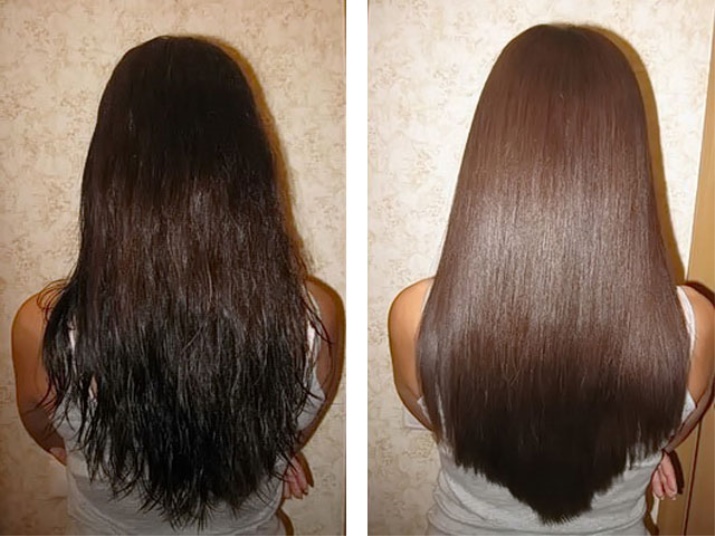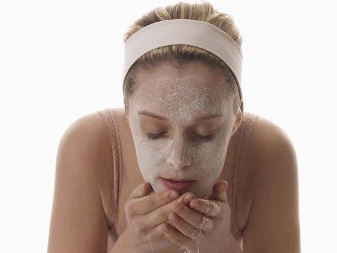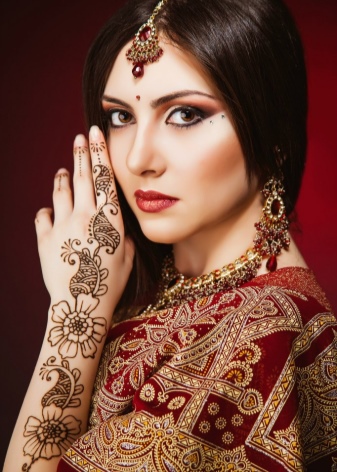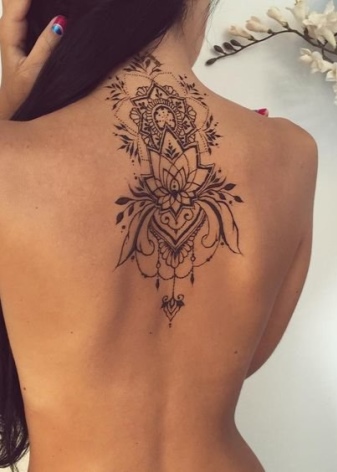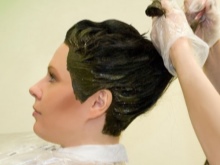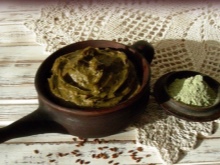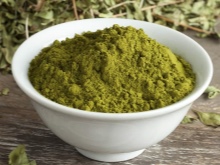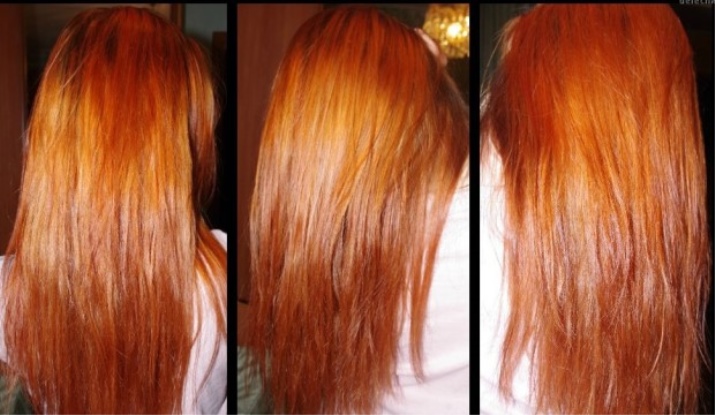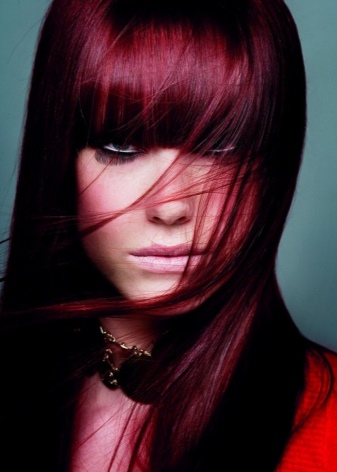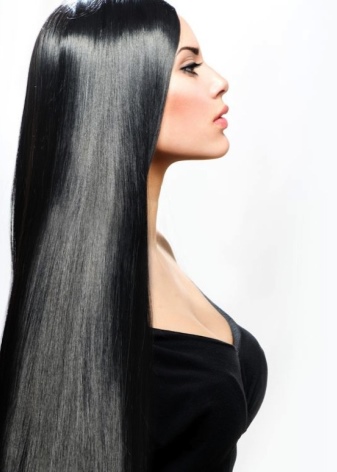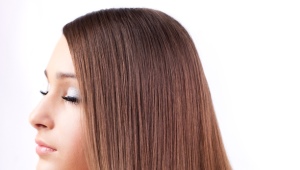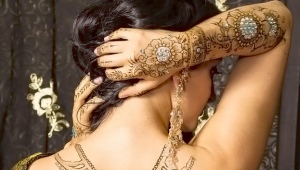Indian henna
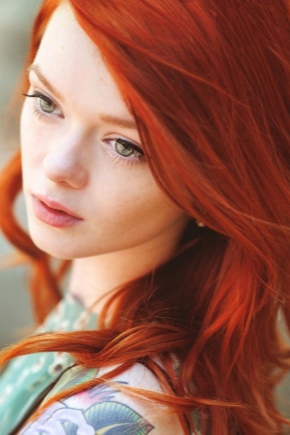
Those who like to change hair color, but prefer natural dyes, are certainly familiar Indian henna. In addition to its organic origin, many are bribed by its therapeutic and prophylactic properties, as well as the variety of shades and relatively low price.
Initially, henna in India was used as a remedy. This perennial shrub called Lawsonia is non-leafless (from the leaves of which henna is obtained) was widely used in healing wounds, burns, relieving pain and itching. An indispensable tool for many skin diseases, Indian henna was widely used in the treatment of migraine, stomatitis, back pain. The powerful disinfecting properties of lavsonia are still used in the treatment of surgical sutures, cuts, and in the treatment of many severely treatable chronic skin diseases.
Over time, Lawson began to be used as a means for painting. The upper stems with young leaves, which have the most coloring properties, were used for the production of tissue dyes and body tattoos. Milled into fine powder, these leaves dye silk and wool in a yellow-orange shade. And the whole lower part of the plant was used to make hair dye.
It is important to place the henna powder in a vacuum immediately after grinding, otherwise it tends to lose its useful and coloring qualities very quickly.
Features
Henna is undoubtedly the leader in its beneficial properties among all other hair dyes. Together with the new saturated color you get shiny, thick hair, which will noticeably increase in volume, become more elastic and healthier. And with regular use, you can easily get rid of dandruff and hair loss.
But even here it is important not to overdo it - the paint contains rather aggressive acids that open the hair flakes and act on the rod itself, as if loosening it. Therefore, when painting too often, the hair can become dry and brittle, it starts to split, it is harder to comb after a shower. It is enough to dye your hair twice a month, so that the benefits of henna will not be harmful to your hair.
This natural, vegetable paint rather poorly combined with other chemical and synthetic dyes. For example, applying henna on newly bleached hair can lead to quite unexpected and unpredictable results - ranging from orange, blue hues up to a rich green color.
The same applies to the reverse option - after dyeing with a natural dye chemical paint may lie uneven, and the color may be heterogeneous.
Shades
On the shelves of shops you can find not only Indian, but also Iranian henna. But it was the Indian who deserved her love of customers due to the variety of shades. Using henna from Iran, you can only achieve red and copper shades, i.e. to get a different color, you'll have to add additional components. The Indian version has a richer palette of colors. In addition, easily mixing them together, you can get new and unusual colors, smooth iridescent transitions of shades that look different in the light of the sun and in the shade. You must admit that not even every chemical dye can boast such qualities.
There are several basic colors of Indian henna: black, gold, burgund and brown. Correctly observing the proportions and mixing them together, you can get new colors, such as light brown, mahogany, chestnut and others.Depending on the original hair color, you can change their shade by one tone or drastically change the color and get a rich and deep color.
Black
This kind of henna is adored by brunettes and brown-haired women. Indeed, depending on the chosen proportions, you can get a blue-black, bronze or dark chestnut shade. Black henna is obtained by mixing in equal proportions of red henna and indigo powder (or a more familiar name is Basma). Basma is also a natural dye, ground indigo plant. This greyish-green powder is not inferior to the Indian counterpart in its useful properties. But with him you also need to be careful, especially owners of gray hair, since the Basma can dye them in burgundy or even green. That is why it is better to apply it to dark-haired girls, with what the more Basmy, the darker the shade will turn out.
Brown
An excellent choice for owners of light brown hair. Applying this shade of Indian henna, you can, like slightly emphasizing your natural hair color, and get rich reddish-golden shades: from slightly reddish to deep chestnut.
Golden
This option is only suitable for those who by nature have blond or light blond hair. Blondes with this shade should be careful because we remind you that henna behaves unpredictably on previously bleached hair. Therefore it is worth checking on a separate strand behind the ears or in the back of the head. In addition, having tried even once to dye her hair with golden henna, it will not be easy for the blonde to return to her original color.
Burgund
This shade of the world-famous alcoholic drink will suit not every color type. For example, on dark hair, it may be practically unnoticeable, and blond hair may become too bright, acidic. But with skillful use, you can get a deep cherry color with a copper tint or golden highlights.
Which is better to choose?
In addition to the usual Iranian and Indian henna, you should also mention the Turkish. Although it does not have the same bright colors as the others, it is in no way inferior in quality to the Indian one. But it is the Indian that is easiest to use, since it has the finest grinding, respectively, it is easier to apply and wash off.
In each of the three options you can find a separate subspecies - it is colorless henna. In contrast to the usual, this color will not change your hair color, but with regular use it will help to restore their structure, heal the scalp and even eliminate dandruff. Literally after one or two masks, you will notice the effect: the hair will become softer, more elastic, dryness and irritation will disappear. If you have had a bad experience with dyeing or too aggressive perms, you can restore your hair with colorless henna. In this case, the apparent effect after the course will be held up to three to four months.
Also a noticeable plus of colorless henna is that it can also be used on the face - masks based on it significantly rejuvenate the skin and eliminate any inflammation, herpes, hematomas and boils. By the way, colorless henna can also be successfully used to strengthen and restore eyebrows and eyelashes. If you want to give them expressiveness, you should pay attention to black henna. It has long been successfully used for dyeing eyebrows in a variety of shades, ranging from dark resin to slightly gray, just to emphasize the shape. It is possible to purchase such paint both in powder, and to plant independently, and to buy already ready, professional.
Indian henna can also be used to draw temporary tattoos on the body. Paint based on it lasts only a few weeks, so this tattoo will not have time to get you bored. They are sold in conical packages, so they are immediately ready for use.
How to paint?
As already mentioned, Indian henna is much easier to use than Iranian or Turkish.Due to the very small fractions, this paint is easily diluted with hot water, without forming lumps. The method of application at home is no different from the usual paint manipulations: dilute two or three bags of Indian henna (one is enough for eyebrows) in a bowl to thick consistency and apply to clean damp hair, starting from the back of the head and gradually moving to the forehead. Beautiful at home, of course, better in gloves, covering his shoulders with a towel.
There is an opinion that after the water has been diluted it should be allowed to infuse: someone leaves for half an hour, and someone for the whole night. This, of course, is not a postulate, everything is individual, and henna is the paint with which you can safely experiment. Similarly, adding various additional components to the paint - lemon, beet juice, cocoa, decoctions of herbs, you can not only increase the benefits for the hair, but also get a new shade. In general, this is a fertile field for lovers of something new and unusual.
After applying the mixture to create a greenhouse effect, you can wrap your head with polyethylene and cover with a towel.
How much to keep?
Dyeing time depends on many factors - the initial condition of the hair, their color, the type of henna and other. For example, blondes to get a reddish tone enough to hold henna on the hair for 10-15 minutes. For brown-haired women, this procedure will be delayed for 2.5-3 hours. Any deviation in time can lead to unexpected consequences. For example, if you overdo the paint, instead of the expected healthy and strengthened hair, you can get lifeless and dry strands. But under-maintenance of the necessary time, the hair color may not change at all. Again, it is believed that for the best effect, henna should be left on the hair all night.
But this controversial belief is only suitable for particularly courageous experimenters.
Reviews
For all those who doubt the benefits of Indian henna, we suggest reading a few comments from women who have been using it for years.
- Regular use of Indian henna can get rid of gray hair. Hair became more well-groomed, alive.
- It has long been painted with henna and various paints based on it, since industrial dyes do not tolerate my hair. The process is fascinating, because you never know what shade you get as a result. But, like all those who prefer henna, I have already become accustomed to its surprises and love affectionately for natural care for my hair.
- I heard about Indian henna for a long time (I used Iranian before), but it is not so easy to find. Deciding to buy, I understood why so many enthusiastic reviews about her. Firstly, it is much more pleasant to use it and faster than usual and it is washed off without any problems at all. Secondly, the color is really juicier and richer.
So anyone who wants to not only change the hair color, but also to heal their hair, should pay attention to Indian henna.
Read more about Indian henna in the video below.
